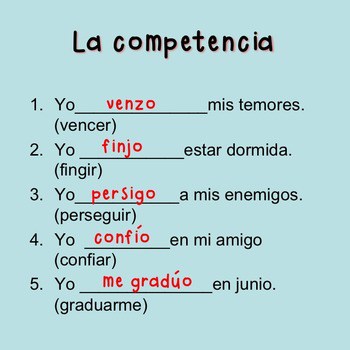
When we were kids, Leticia and I used the same clothes. **You can replace ‘días’, with meses, semanas, or days of the week.Ĭuando éramos niñas, Leticia y yo usábamos la misma ropa. * You can replace ‘lunes’ with another day of the week. Trigger words for the imperfect tenseīelow is a table with some words that we frequently use in Spanish with the imperfect tense: Take this Sp anish Imperfect practice quiz. Mark cooked while I finished the project.Ī great way to solidify your knowledge of the imperfect tense is by practicing it. Mark cocinaba mientras yo terminaba el proyecto. Yo leía mientras Zoey lavaba los trastes. I came back because the parking lot was full. Me vine porque el estacionamiento estaba lleno. When I was a child, I liked to eat chocolate.ĭescribing places, people or circumstancesĮl día que conocí a Juan hacía mucho frío. I went to my grandparents’ house on Thursdays.Ĭuando era niña, me gustaba comer chocolate. ❼uántos años tenías cuando conociste a mi papá? In 1990, Laurie and Julia were twenty years old. + + Įn 1990, Laurie y Julia tenían veinte años. Sentences with the imperfect tenseīelow you’ll find some examples of the different uses of the imperfect tense. For this reason, it’s common to use it when sharing memories or telling stories. In other words, it places you in the past and tells you how things, actions, or people were. The imperfect in Spanish is a tense related to narration.

Describe people, places, and circumstances.So when talking about the past, the imperfect tense is used to: When to Use Imperfect in SpanishĪ crucial rule of the imperfect in Spanish is that this tense is used to talk about actions that occur repeatedly in the past or whose beginning or ending is unspecified.


Take Note: Irse, the reflexive form of the verb ‘ir’, follows the same conjugation.


 0 kommentar(er)
0 kommentar(er)
